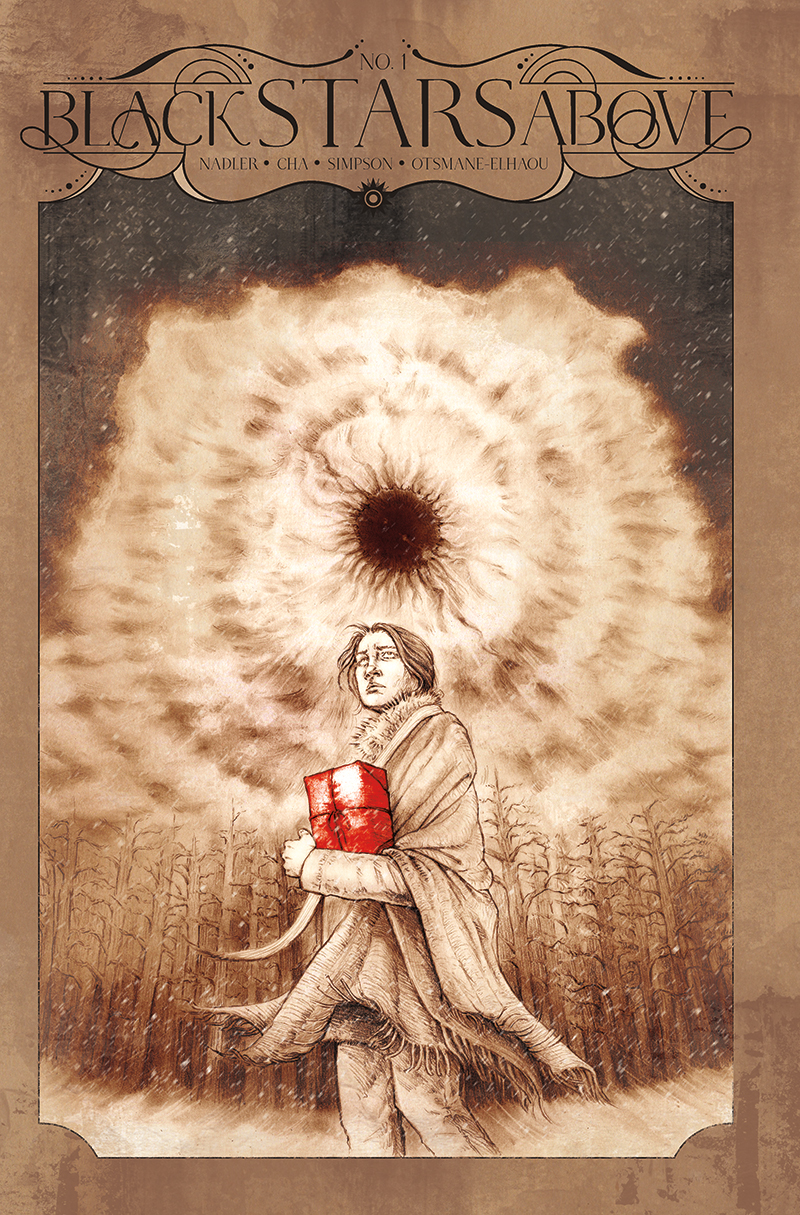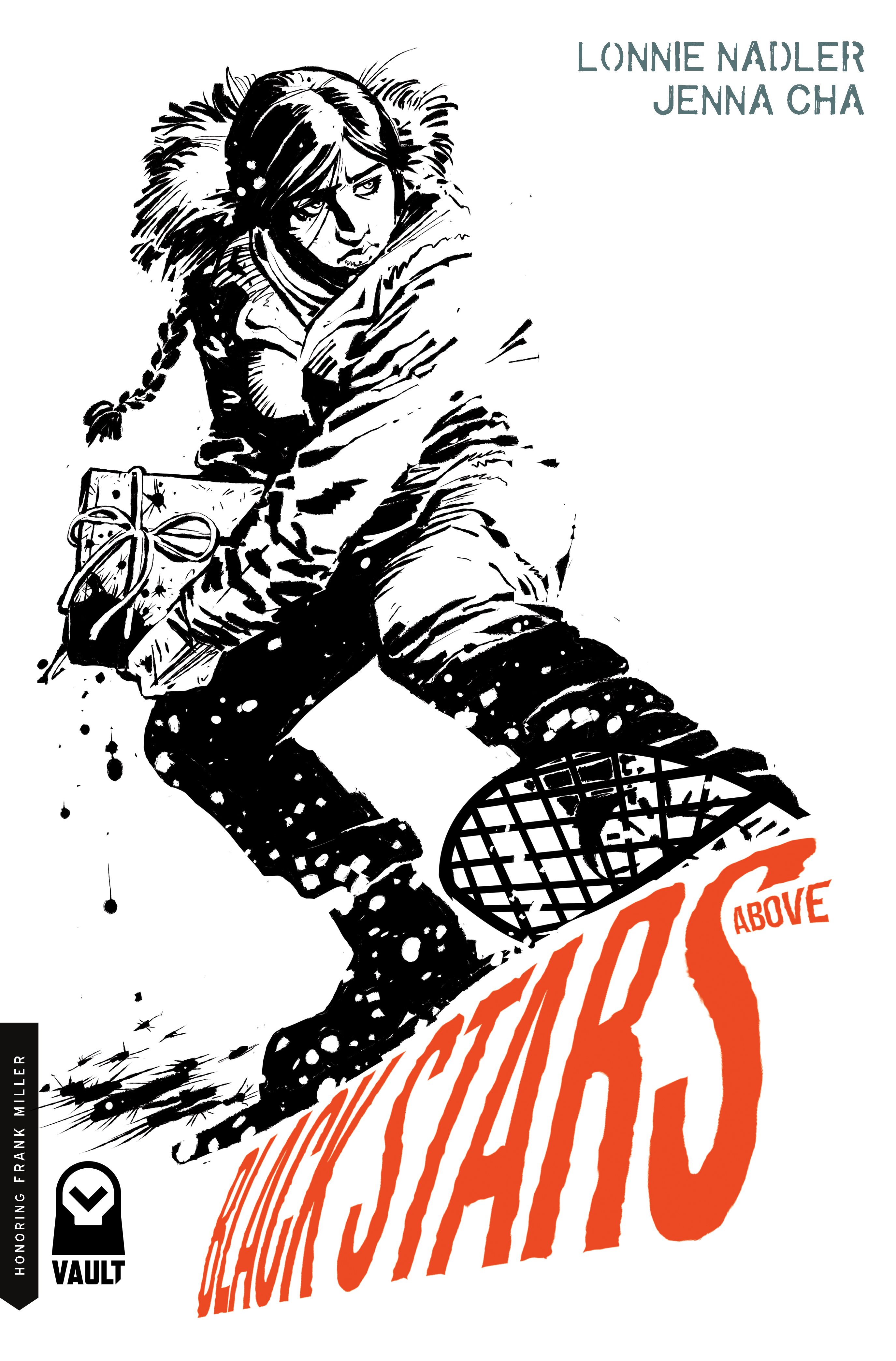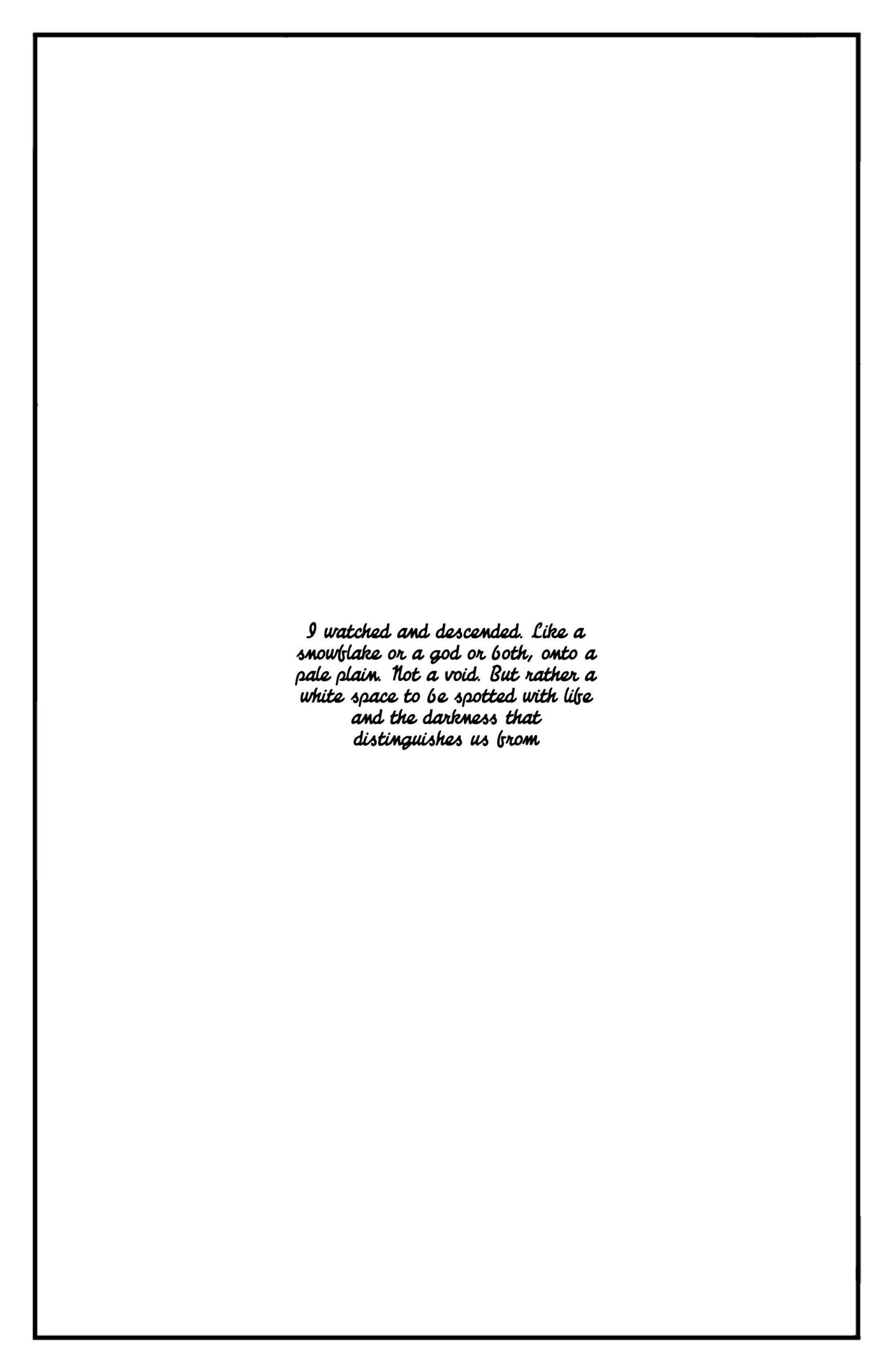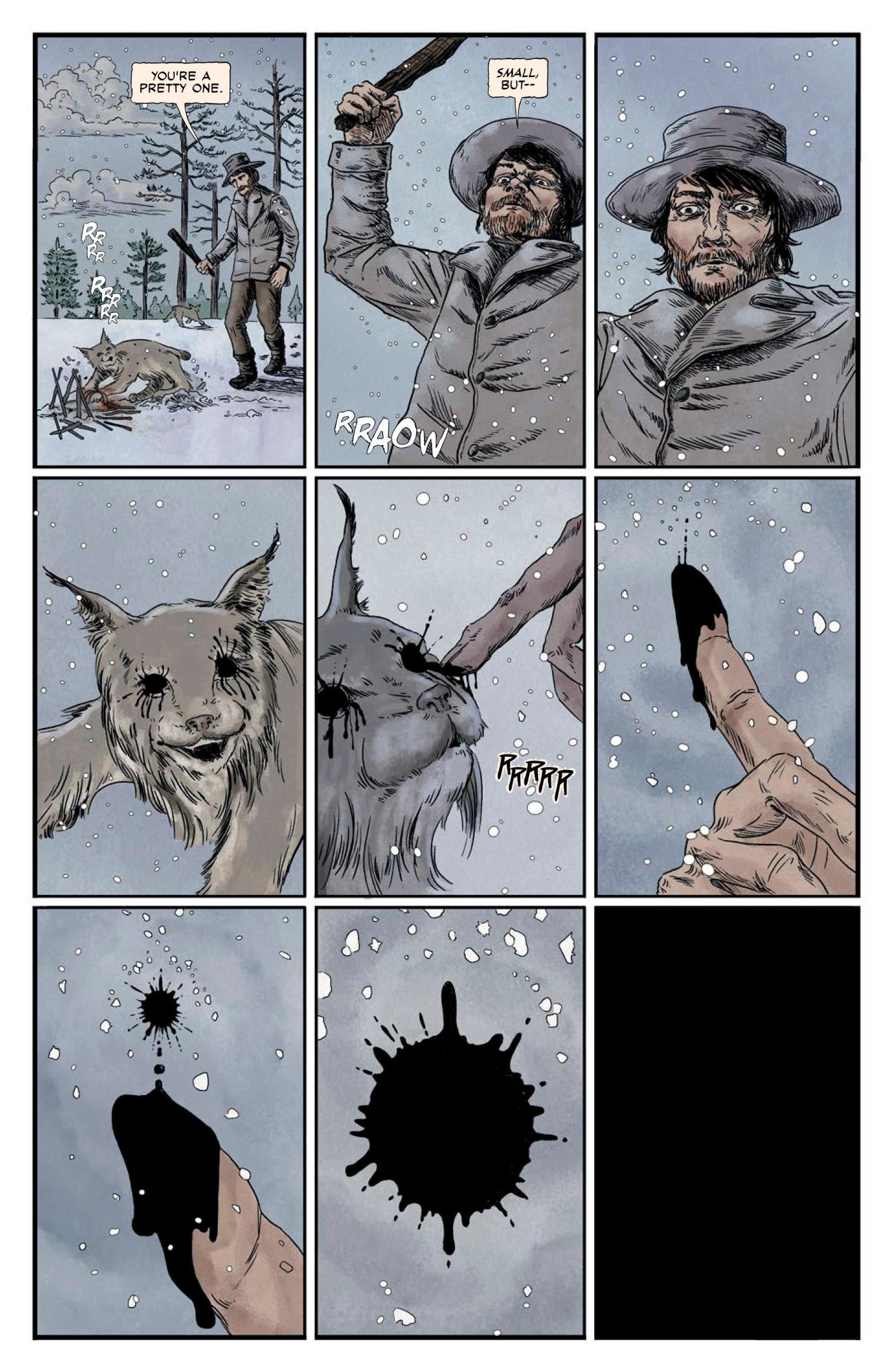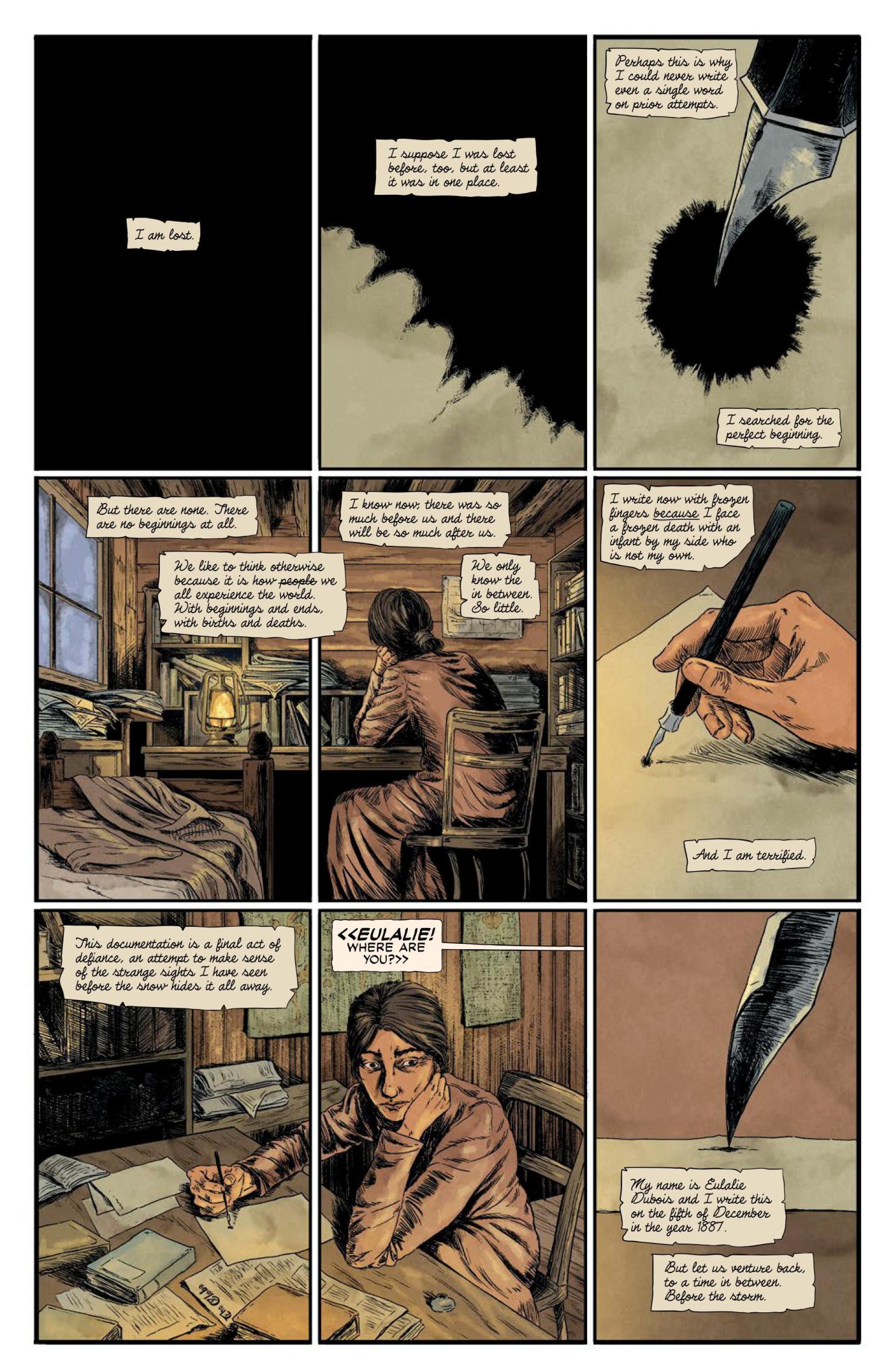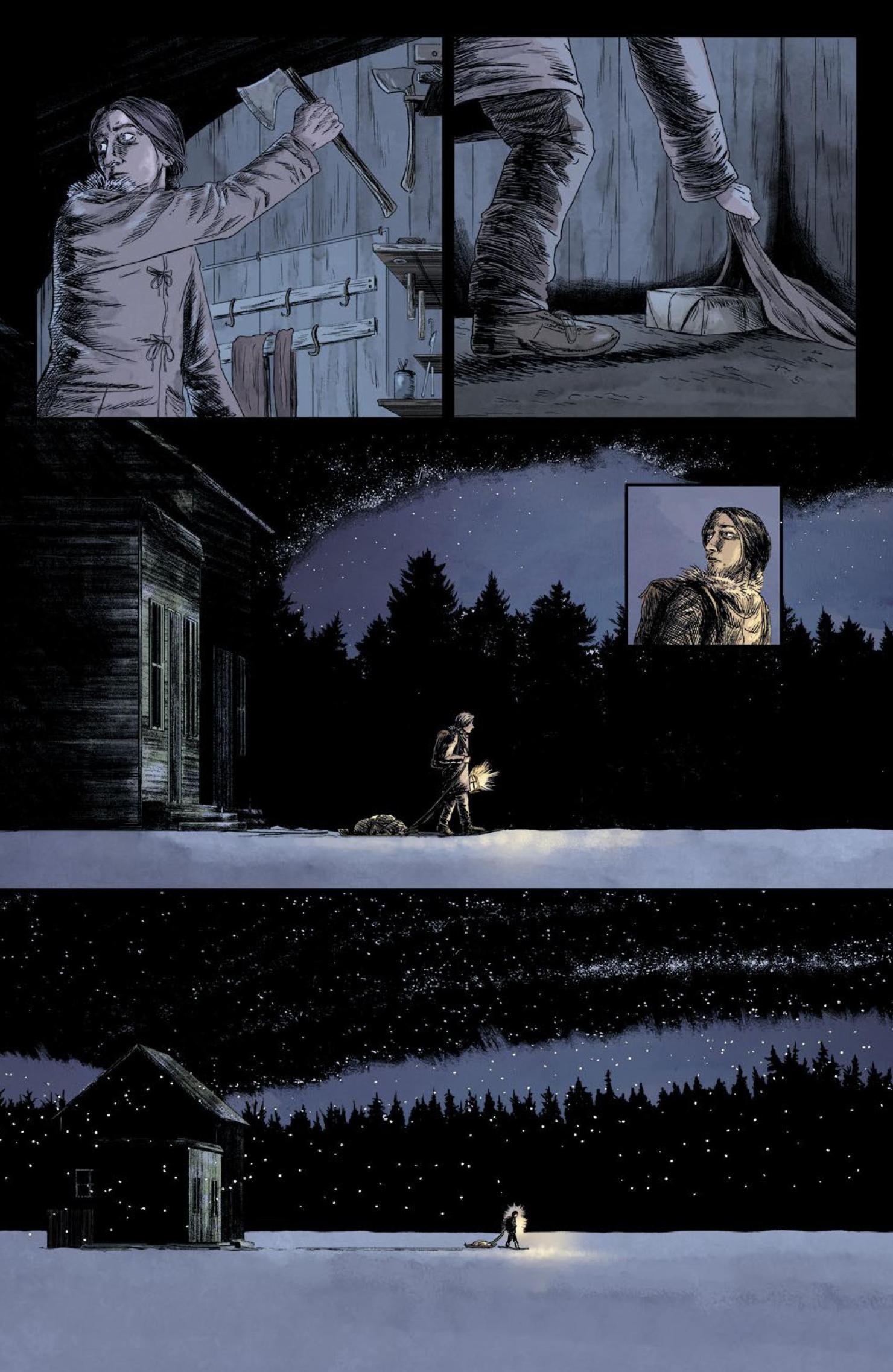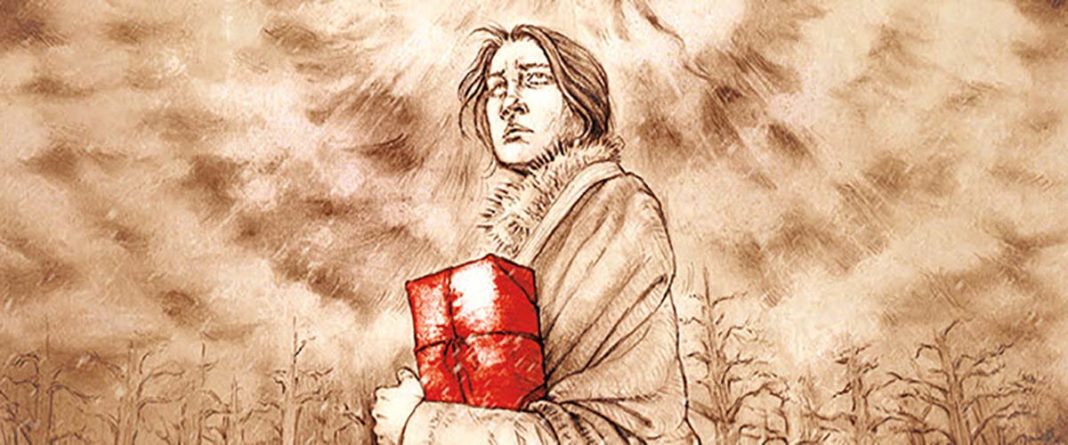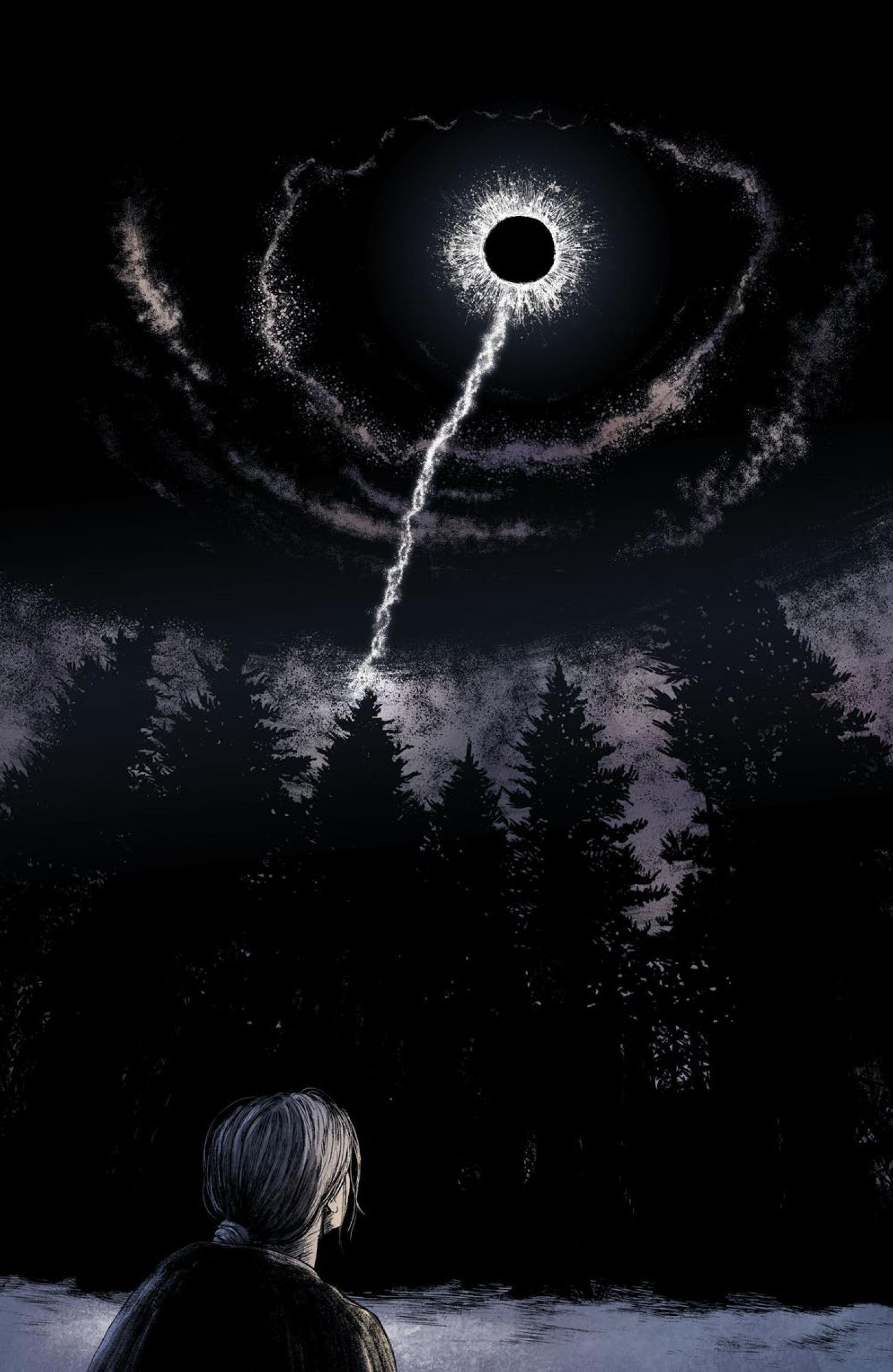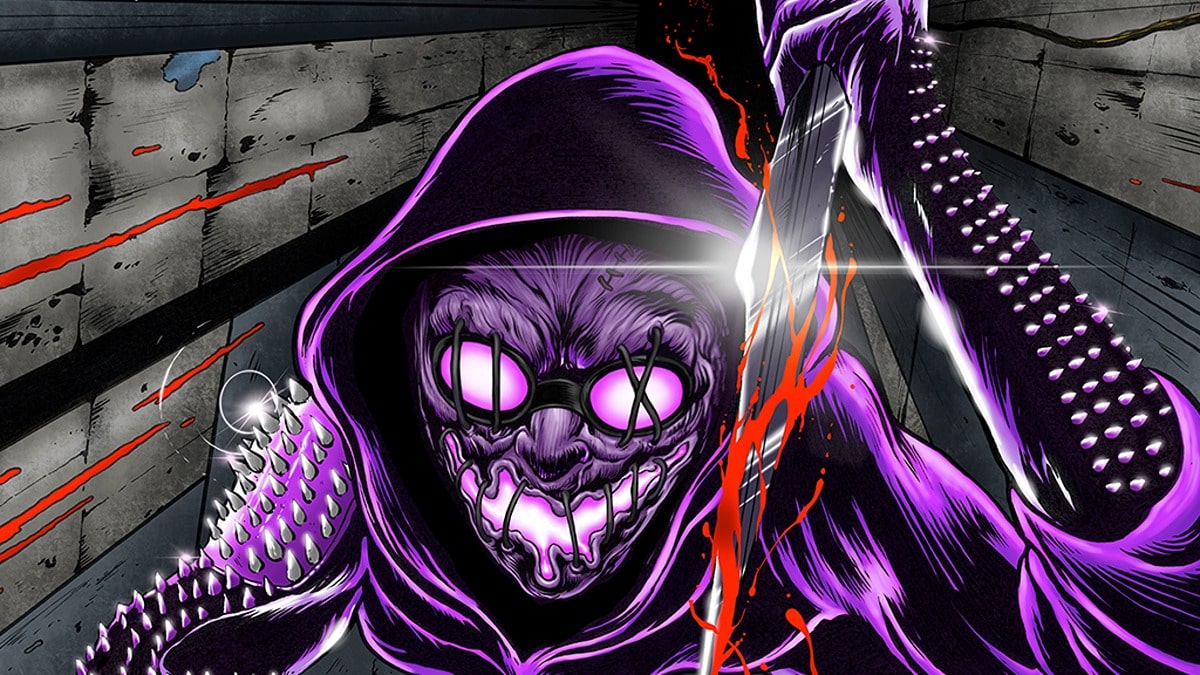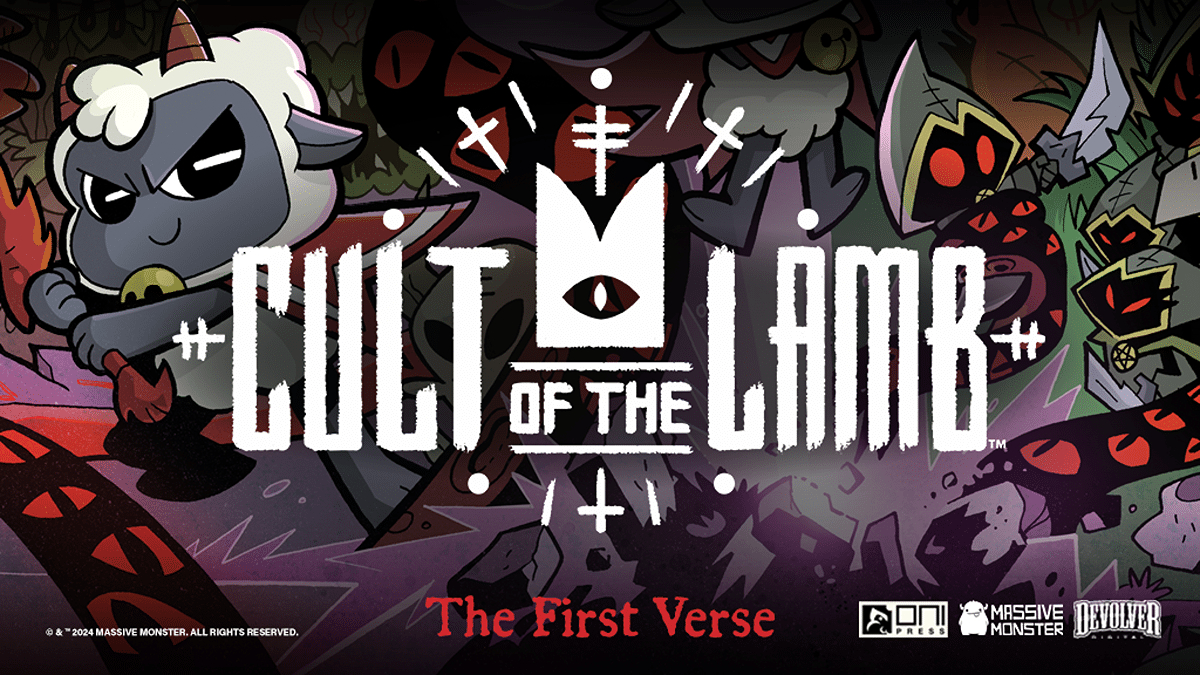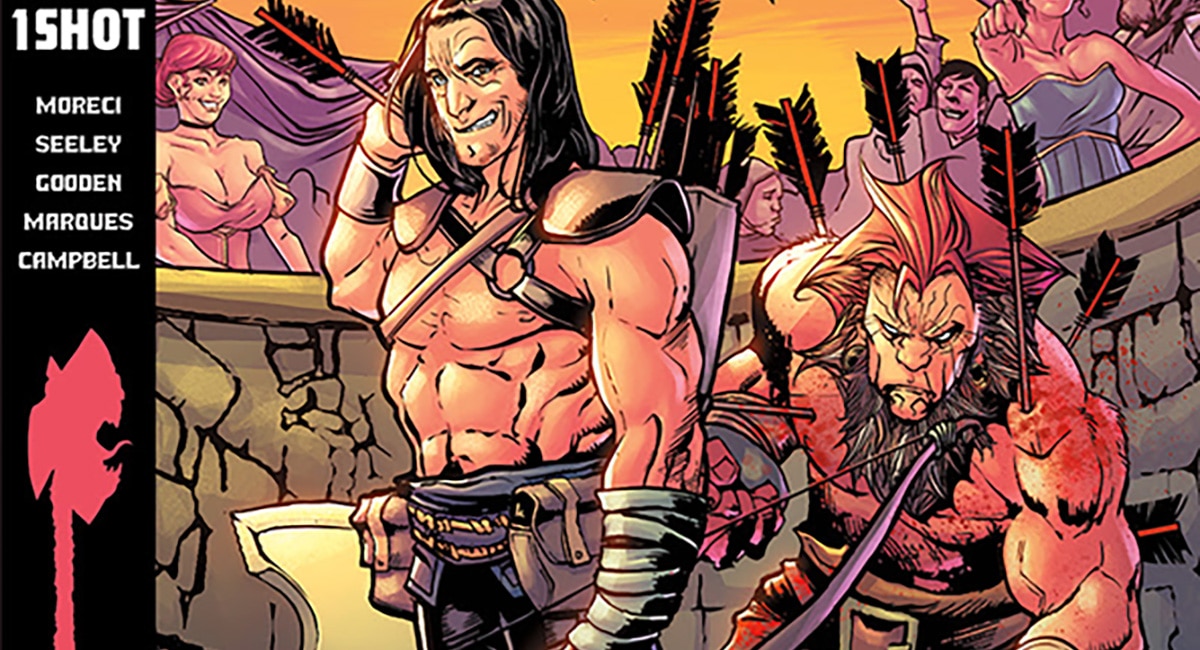Set in 1887, Black Stars Above #1 follows a young fur trapper named Eulalie Dubois as she struggles with her family’s expectations and her desire to explore the world. When the chance to break out comes in the form of a mysterious package that needs delivering to the town north of the woods, Eulalie sets out on a journey into the cold darkness alone. But what is lurking in the wilderness?
Written by Lonnie Nadler (The Dregs, Marvelous X-Men) and illustrated by debut artist Jenna Cha, the cosmic horror tale features colors by Brad Simpson, letters by Hassan Otsmane-Elhau, and designs by Tim Daniel.
In an exclusive statement for The Beat, Nadler says,
“For me, horror without a sense of intimacy is superfluous. I love the genre but I’m also very particular about what I consider great horror stories. At its best, I see horror as a means to willfully confront the nature of our being, and thus it must be coupled with intention. It’s about connecting with a readership who experiences similar anxieties about the world at large. If you’re not doing that, what’s the point? I knew that if I was going to write a story of this ilk, it needed to have weight, that I would have to dig into the crevices of my personality to uncover a narrative that explored who I am and the limits of my understanding. While Black Stars Above tackles a lot of ideas, at its core it was born out of the fear of lineage in forging one’s own identity, the desire to escape home, and the dread in knowing that no matter how far you run, family always has a way of finding you.
However, Black Stars Above goes back further than this. As with most stories, it began as a simple, provocative image. A few years ago I was reading Margret Atwood’s book, Survival, which serves as a study of Canadian literature, and it filled me with a desire to tell a distinctly Canadian horror story with wider appeal. One that exhumed the roots of the country and the notion of survival, in its many meanings, and to tie that to our contemporary understanding of self, family, and history. While reading Survival, I couldn’t get this image out of my head: a young woman trekking through a snow storm in the dense Canadian wilderness, holding a mysterious parcel, and a black star watching her from the sky with apathy. For some reason, I had it in mind that this was all happening during the fur trade era.
I’ve always had an affinity for historical horror stories and in crafting Black Stars Above and when I set to work researching this era, everything fit perfectly into place. That one scene expanded organically to become its own beast. Many historians credit the fur trade as the underlying foundation of Canada, and North America in general, for a number of reasons. Given the themes I wanted to explore, I decided to set Black Stars Above at the tail end of the 19th century when the fur trapping industry was all but dead and the country was on the brink of major change. The limits of human knowledge were expanding, cultures were being defined, family life was shifting, and individualism was beginning to take root. It was a time of liminality and the nation as a whole was adapting, finding new ways to survive.
With my subject matter solidifying, I then had to decide how this story would be told. I wanted to explore this bevy of themes through a narrative that was equally rich, meaning a bold combination of genres and styles to create a book that defied categorization in some ways. So what we get is this weird steaming cauldron that melds together period piece drama, folk horror, cosmic horror, and survival narratives to deliver, what I hope, is a truly unique and terrifying brew. While I find these types of elevator pitches to be rather reductive, I believe I first pitched Black Stars Above as At The Mountains of Madness meets The Revenant, and though it has fattened up since then, that odd combination largely holds true. However, while the series is set in 1887 and deals with cosmic threats outside the limits of human knowledge, it has become the most personal story I’ve ever written, one I feel best represents who I am as a storyteller. I embraced all my influences from Cormac McCarthy to H.P. Lovecraft to David Lynch to Ingmar Bergman, but rather than imitating them, I (hopefully) found a way to take what I’ve learned through their work to create a piece that feels like me, through and through.
While the horror in this story is deeply personal in its exploration of family, Black Stars Above, as the title implies, is above all else, a cosmic horror story. I’ve always found this subgenre appealing because it deals with sublime threats that are by definition undefinable. These stories are terrifying because in exploring that which we cannot know, we come to learn more about ourselves and our place in the cosmos. How can we continue to survive in the face of the unknown? This project is very much an attempt to tell a story that fits in line with Lovecraft and his contemporaries, while also coming to terms with the author’s unfortunate xenophobia and hopefully telling a story that addresses those issues by seeing these “horrors” through the lens of a character who cannot help but be impacted by them.
Aside from the intimacy I’ve tried to imbue within the book, this project means a lot to me because I’ve been wanting to work with Vault for some time. They trusted me to build this challenging narrative and have been supportive every step of the way. And most importantly we’ve put together a wonderful creative team who have all contributed equally to the book’s expansive scope and dark beauty. This is the debut series for Jenna Cha, my co-creator and artist on the series, and the work she’s doing inspires me every day to tell the best story I can. We learned rather quickly that we share the same horror brain, and as a result we’ve been on the same page every step of the way and it shows in the book. I could not have found a better collaborator. Then we’ve got Brad Simpson on colors who is just a dream to work with. He never misses a beat. And Hassan Otsmane-Elhaou is on letters who is a genius, augmenting the narrative through his unique approach to the craft of lettering.
In closing, I will say that my intention with Black Stars Above is to deliver the type of horror I love, not one that scares readers with big set pieces, but rather one that leaves them with a lingering dread as they uncover a timeless darkness that burns among the ancient cold.”
In her own exclusive statement for The Beat, artist Jenna Cha adds,
“As an artist, Black Stars Above has been a gift. It’s a story catered to exploring the craft of visual storytelling founded on a marriage of beauty in nature and horror of the unknown. For a story that allows an artist to reap from such a landscape, I’ve found that the world rather prefers to illustrate itself. The pitch for Black Stars Above intrigued me for how the face of its world immediately unraveled in my head, which was indicative of the care and research invested in the storytelling. It was pretty clear after first talking to Lonnie Nadler that we share the same visual creative bank and we share the same amount of love for visual storytelling in both comics and film. Black Stars Above, for how artistically challenging it can be as my first publication, is a dream project.
On one hand, I personally tend to be more partial towards comics that have less words and more finesse towards sequence and visuals—stories that must’ve forced the creators to dig into their grasp of the comic language. On the other hand, I love reading comics that are artistic feats, where the creators’ fulfillment resided in the technical craft and beauty of the drawing. To a degree, the storytelling of Black Stars Above was an avenue for me to apply both of those aspects to my own practice.
I find this wave of “folk horror” in movies and comics to be very cathartic in allowing stories to be told in settings stripped of the conventions of society, where one can find refuge in a direct unpartitioned passage towards meditating on human themes. I’ve always found cosmic horror to be similarly cathartic (as wrong as that may be) in allowing one to regard themselves, their lives and their world as something universally minute. Black Stars Above finds catharsis and horror in the infinity of nature, in all its beauty and mercilessness, but I think the story is most fulfilling through the opposite—its intimacy. Cosmic horror, in Black Stars Above, is as much about the human struggle as it is about the feeble nothingness of mankind. The horrors of familial captivity, lack of freedom, emotional abandonment, and unreachable dreams—these are the real forces of nature that the protagonist, Eulalie, must face with as much fight as the elements. In this sense, I feel that this story can be for anyone, and it is an important example of the treatment of horror in general that transcends the conventions of the genre.
Furthermore, what is also noteworthy about Black Stars Above is the character of Eulalie. To me, she is the definition of a strong female character. That term tends to be thrown around a lot, but I think—or, I hope—comics and other media are on the path to writing strong and most importantly realistic female characters as a given reality, and not a moral obligation. Eulalie doesn’t think she’s strong, or badass, or intelligent. She just is those things. She doesn’t dwell on the aptitude of her survivorship skills—she simply survives. The merciless world she was born in strips her and her family of anything other than the instinct of preservation—and yet, she is protective of her inborn human needs, wholly uncompromising when told to sacrifice her freedom and means of fulfillment. The sanctity of her innate individualism is the symbolic fortification against her opponent: the debilitating infinity of nature and the cosmos.
Working on Black Stars Above as my first publication is the biggest fortune in the world. I could not have asked for a better team to make this book come to life; one can only be so lucky in their first step into this industry. Lonnie Nadler’s passion makes his work unprecedented and inspires me to reach farther than I imagined before. I’m also unbelievably grateful and excited to work with Brad Simpson, who is one of my favorite colorists and a hallmark in the industry—he elevates the imagery of Black Stars Above to a place I couldn’t imagine, and seeing his art paired with the ink is truly surreal. I’m also so grateful that this book got the fortune of having the best possible letterer out there, Hassan Otsmane-Elhaou. I’m proud to be part of such a team in the Vault Comics family. Be afraid.”
In addition to these exclusive insights about the series, The Beat also has an exclusive, extended preview of the first issue, courtesy of Vault Comics. Black Stars Above #1 is set to debut on November 6. Check out the preview below, and head over to Vault’s website for more.
